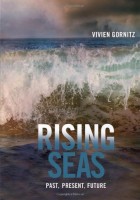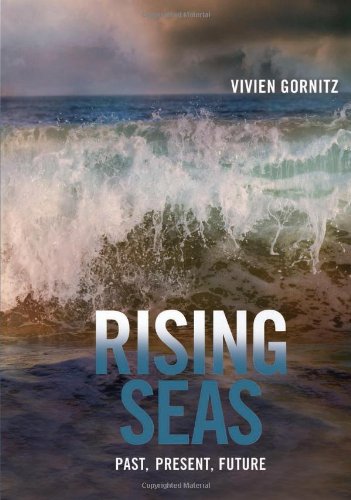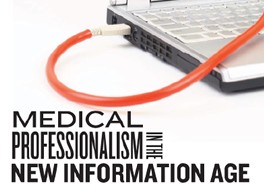 Author: Vivien Gornitz, PhD
Author: Vivien Gornitz, PhD
Publisher: Columbia University Press – 344 pages
Book Review by: Paiso Jamakar
Going back into tens and even hundreds of thousands of years ago, could previous rises in sea levels happen again, this time inundating tens of millions of people living in large coastal population centers like Bangkok, Hong Kong, London, Los Angeles, Mumbai, New York City, Shanghai, and Tokyo?
The inundation, destruction, and deaths of tens, even hundreds, of millions of people are very much possible, writes the author.
That is why reading this book, as inhabitants of Mother Earth, is not just important, but critical to our very survival. It is we, as citizens of our nations, and as participants in our democracies, that can move, even force our governments to take the necessary actions in a timely manner, to ensure our survival.
Here are some warning signs on the question of future survival that Dr. Gornitz gives us at the outset of her book:
- Growing amounts of greenhouse gases caused by human activities are causing global warming, particularly near the North Pole and South Pole and on high mountains.
- Rising sea levels are raising concerns of people living in cities and towns near shorelines and in low-elevation islands.
- Average height of the world’s oceans has varied considerably between glaciations (freezing over) and inter-glaciations (warming, such as the era we are in today) periods in our geologic past.
- The pace of sea-level rise has quickened since the late nineteenth century and may be even quickening in the last 20 years, paralleling the rise in global temperature.
The big question we all should ask is: could continued and accelerated greenhouse gas-induced warming make our temperatures rise so high that it causes a catastrophic meltdown of our polar ice sheets?
This book provides to us the history, the science and the all-important understanding of the causes and effects of rising seas, that can empower us to take the right actions, and on time, so that we can prevent the impending disasters. Among other matters and issues, it provides us knowledge of the following subjects, as shown in its Contents:
- The Ever-Changing Ocean
- The Causes and Detection of Sea-Level Change
- Piercing the Veil of Time: Sea Levels After the Dinosaurs
- When the Mammoths Roamed: Sea Levels During the Ice Ages
- The Great Ice Meltdown and Rising Seas
- The Modern Speedup of Sea Level Rise
- Sea Level Rise on a Warming Planet
- Shortlines at Risk
- Coping with the Rising Waters
- Charting a Future Course
You will find in the chapters the following items (as examples itemized below) to better your understanding of the above matters:
- Table 1.1 – Distribution of the Earth’s Water – illustrating shares of water in terms of Water Source, Water Volume and Percent: Oceans constitute the bulk of it, with 96.5 percent, containing 1.338 millions of cubic kilometers; the others such as ice formations, ground water, lakes, rivers, and others, have the balance 3.5 percent of the world’s water volume.
- Figure 1.1 – The Water Cycle, showing major water reserves and movement of water between reservoirs.
- Figure 1.2 – Major Physical Features of the Ocean – showing things such items as continent, continental shelf, continental slope, continental rise, oceanic ridge, abyssal plain, asthenosphere, abyssal hills, lithosphere, trench, subduction, and volcanic arc.
- Figure 1.3 – Major Wind-Driven Surface Currents of the World’s Oceans
To know of the dangers of climate change that we face in terms of how rising temperatures are causing sea levels to rise and how that can cause untold destruction, I urge you to read this book.
Author:
Vivien Gornitz, PhD is a geologist and special research scientist with the Columbia University Center for Climate Systems Research and the NASA Goddard Institute for Space Studies. She has written numerous articles on sea level rise and the impact of climate change on the coastal zone.
She was a contributor to the Intergovernmental Panel on Climate Change in 2007 and to the New York City Panel on Climate Change and New York State Energy Research and Development Authority ClimAID in 2010 and 2011.







